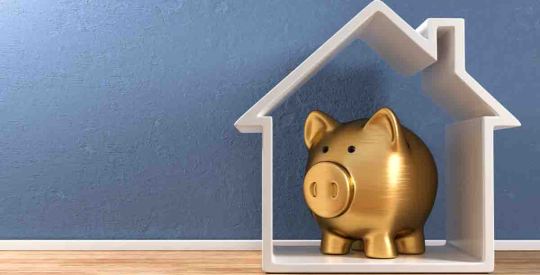Shocking: Coronavirus is causing U.S. stocks to post their worst days since Black Monday.
Not shocking: Realtors told the National Association of Realtors that everything is cool with homebuyers and sellers amidst coronavirus.

Columnist
I get it. Market participants must do their part to steady the ship. I’m not immune, and neither are Realtors. But these NAR coronavirus survey results from March 10, 2020, raise an eyebrow:
A full 78% of Realtors said coronavirus had no impact on homebuyer interest in their market.
And 77% said they saw no changes in home seller listing behavior resulting from coronavirus.
I expect this Realtor interpretation of seller and buyer sentiment to worsen as reality sets in.
How iBuyers can help sellers during coronavirus outbreak
Do buyers even know if they’re going to have a job? Do sellers want open house crowds in their homes right now?
These questions come at peak homebuying season.
Per the NAR, about 40% of home sales each year happen from March to June, and these months are the eye of the coronavirus storm this year.
Most buyers don’t have to be in a hurry if the coronavirus situation darkens. They can refinance into an adjustable-rate mortgage in the 2.x% range to free up the budget, and wait for a bit.
But many sellers are on a clock because of career, family or life events. So, one solution is using an iBuyer like Opendoor or Zillow to sell immediately.
iBuyer stands for instant buyer, named because a home seller fills out a form, gets a bid, and can sell within days. No fixing up the place, no staging, no open houses, no waiting for the buyer to get their mortgage approved. Just a cash offer.
Is coronavirus a blessing or curse for iBuyers?
I did a piece called How Zillow & Opendoor’s Instant Home Buying Can Help Sellers During Coronavirus to lay out this seller opportunity for consumers.
As I was doing that piece, I realized two things:
1. The iBuyer opportunity for sellers is ASAP – like, right now.
Since coronavirus is weakening the economy extremely fast, selling your home to an iBuyer is faster than a traditional listing. And the real benefit may be selling at today’s prices before any home prices fall.
2. The iBuyer model may see its first down market.
What if home prices fall like stocks have and iBuyers like Opendoor and Zillow have all these homes on their books? Since day one, iBuyer skeptics have asked what happens when the market turns and iBuyers can’t sell homes as fast.
These themes will remain hot in the iBuyer, real estate brokerage, lead aggregation and fintech space.
So below, I explore them from three angles.
First, iBuyers are great for home sellers – but act fast
Asking an iBuyer to bid is a no brainer if you’re a homeowner who must sell fast and don’t want buyers parading through your home during peak coronavirus.
Worst case, you don’t like the bid and opt for an agent to list it.
Category leading iBuyers Opendoor and Zillow will connect you with an agent if you don’t like their bid, and most other iBuyers offer something similar.
Best case, you sell within your desired price range and close in days.
Therefore, I don’t see a case against sellers exploring iBuyer options.
I do see a timing case. iBuyers are highly sophisticated institutional property investors, so it’s best to assume they’re deep in the weeds on home price decline scenarios as you’re reading this.
It’s also safe to assume iBuyer bids may get less aggressive as they adjust home price outlooks.
For consumer home sellers who want or need to sell quickly, this means your opportunity for a strong iBuyer bid is now.
Second, iBuyers will now be tested in a full market cycle
Opendoor was launched in 2014, and Zillow’s iBuyer business launched in 2018. Home prices have been rising through these timelines, but what happens to iBuyer businesses if home price growth slows or declines?
Zillow is public, which gives us a lens on iBuyer economics. They bought 6,511 and sold 4,313 homes in 2019. This created $1.4 billion in revenue for their home buying segment, called Zillow Offers.
But analyst Mike DelPrete of University of Colorado offers important notes on unit economics:
– In Q4 2019, Zillow lost $6,407 per home after accounting for purchase price, sale price, agent commissions, interest expense, holding and renovation costs.
– This is up from $3,268 in Q1, $2,916 in Q2, $4,826 in Q3.
Why? Because average holding cost per home since Q1 is up $1,000 and average interest expense per home is up $1,000 – both signs that it’s taking longer to resell homes.
Separately from Zillow Offers, Zillow did an additional $1.3 billion in 2019 revenue and $304 million in profit (EBITDA) by referring home sellers and buyers to agents.
If iBuying economics worsened with declining home prices, Zillow could opt to buy fewer homes but still use iBuyer as a way to attract leads to refer to agents.
Not that they need more consumer traffic: they had 8.1 billion site and app visits in 2019.
Which brings me to point three.
Third, all disruptive models skew traditional as they mature
Online king Amazon got into retail stores. Streaming king Netflix became a Hollywood studio.
And iBuyers will become hybrid real estate brokerage and lead providers as they get deeper down my 4 stages of startup disruption path:
1. Evangelize Instant, Techy Process. Home buying and selling are totally broken, and this instant buying process will reinvent consumer experience.
2. Master Customer Acquisition. Weaponize evangelism with super sophisticated and/or massive budget marketing enabling iBuyers to gain millions of site visitors and customers.
3. Go Mainstream. If they last five or more years and have millions of site visitors and customers, they’re a real estate innovation player, plus a lead source for traditional players.
4. Settle On Hybrid Instant/Human Model. They slowly learn regulation and customer need for human advice on emotional home buying/selling requires iBuying plus brokerage plus lead model.
Zillow has a strong hybrid model, and could skew back toward its bread and butter lead model if dropping home prices put a strain on their iBuyer model.
When rolling out Zillow Offers last year, Zillow provided a three to five year revenue guidance that projected going from (essentially) $0 to $20 billion in revenue for Zillow offers, and increasing lead business revenue from $1 billion to $2 billion. As noted above, they grew 2019 lead revenue to $1.3 billion.
Opendoor is private so I’m still researching how a hybrid iBuyer, brokerage, lead provider model will evolve for them. But remember my Goldman Sachs West nickname for Opendoor’s capital markets team – they will prove nimble during this market shift.
More on Opendoor next time.



